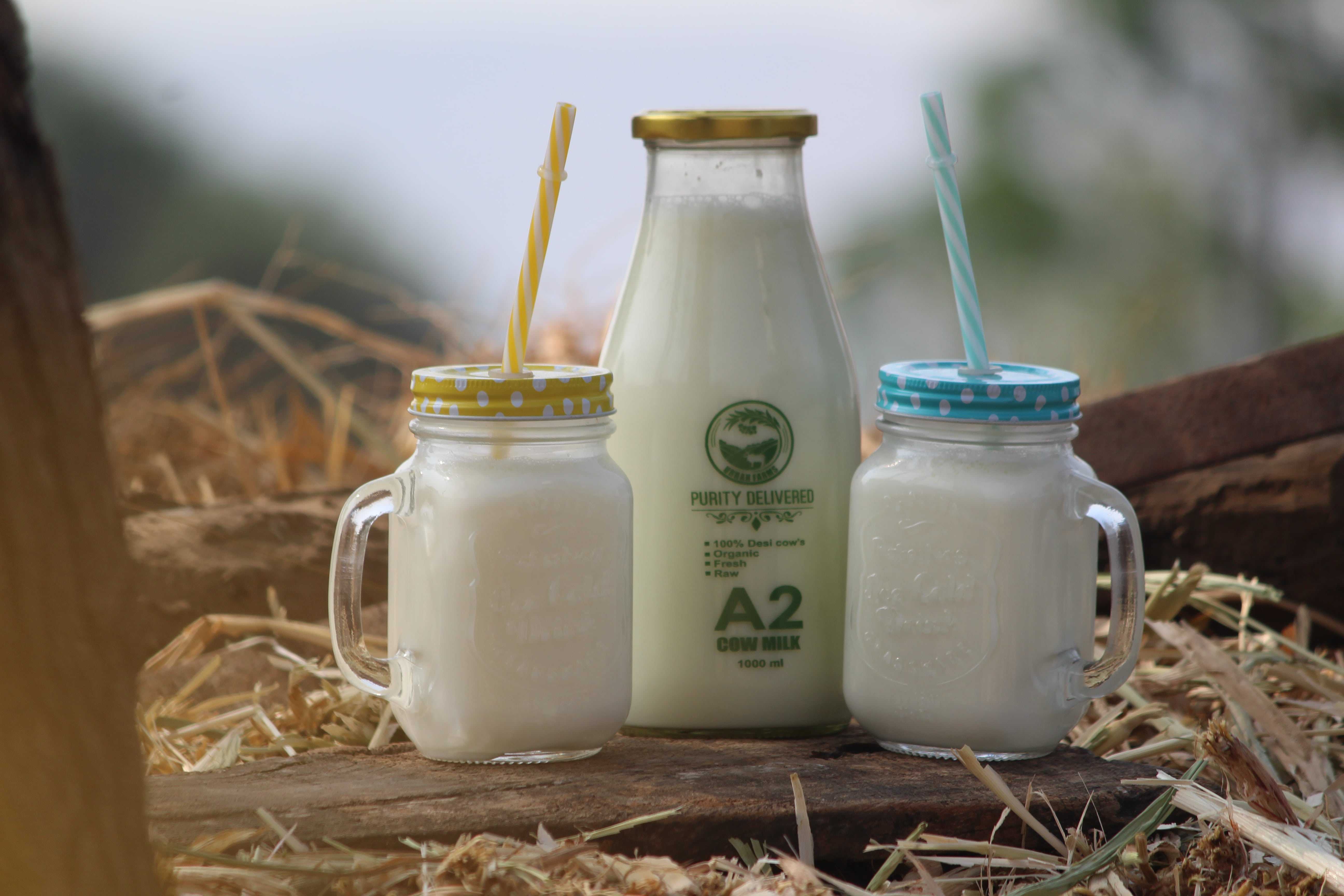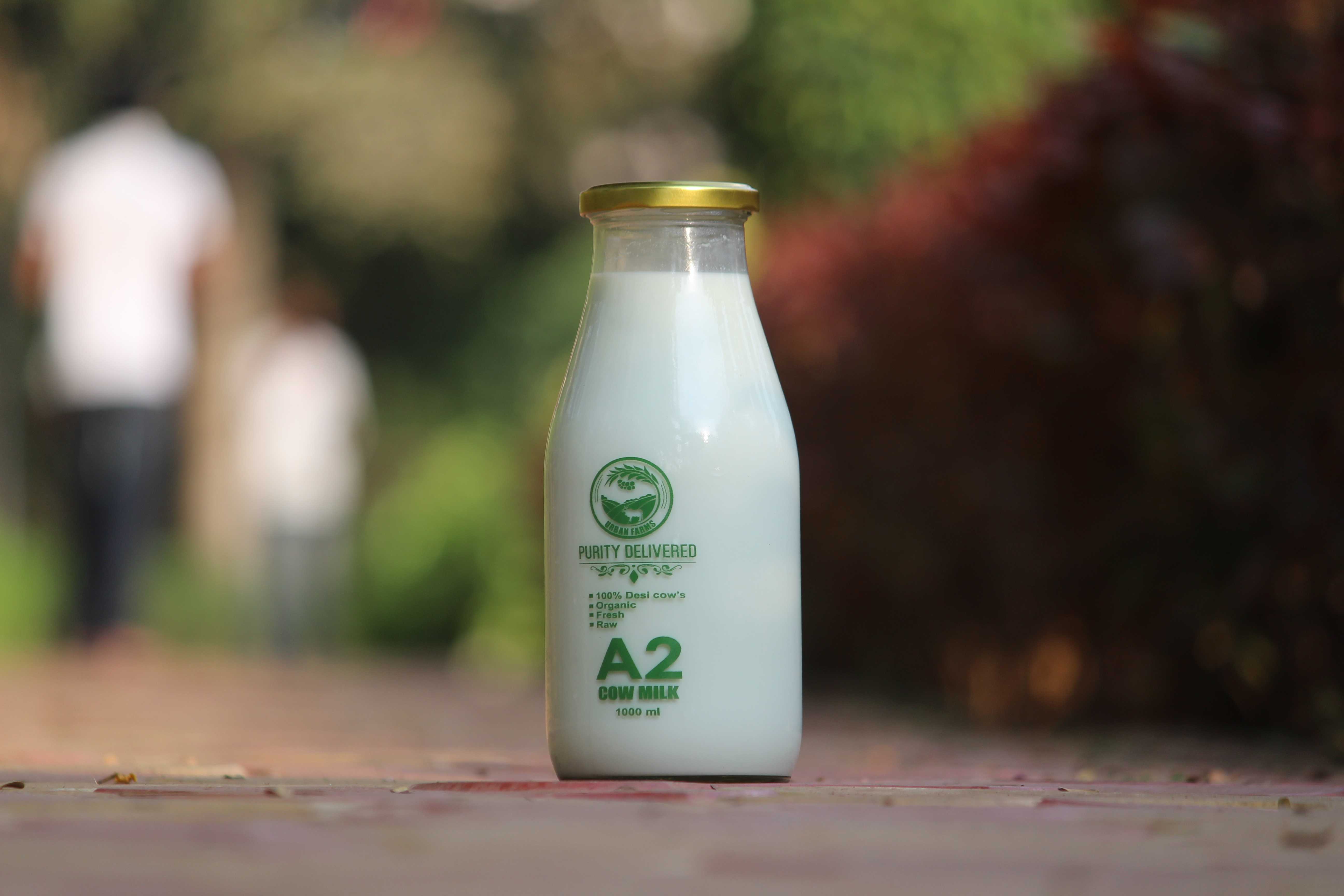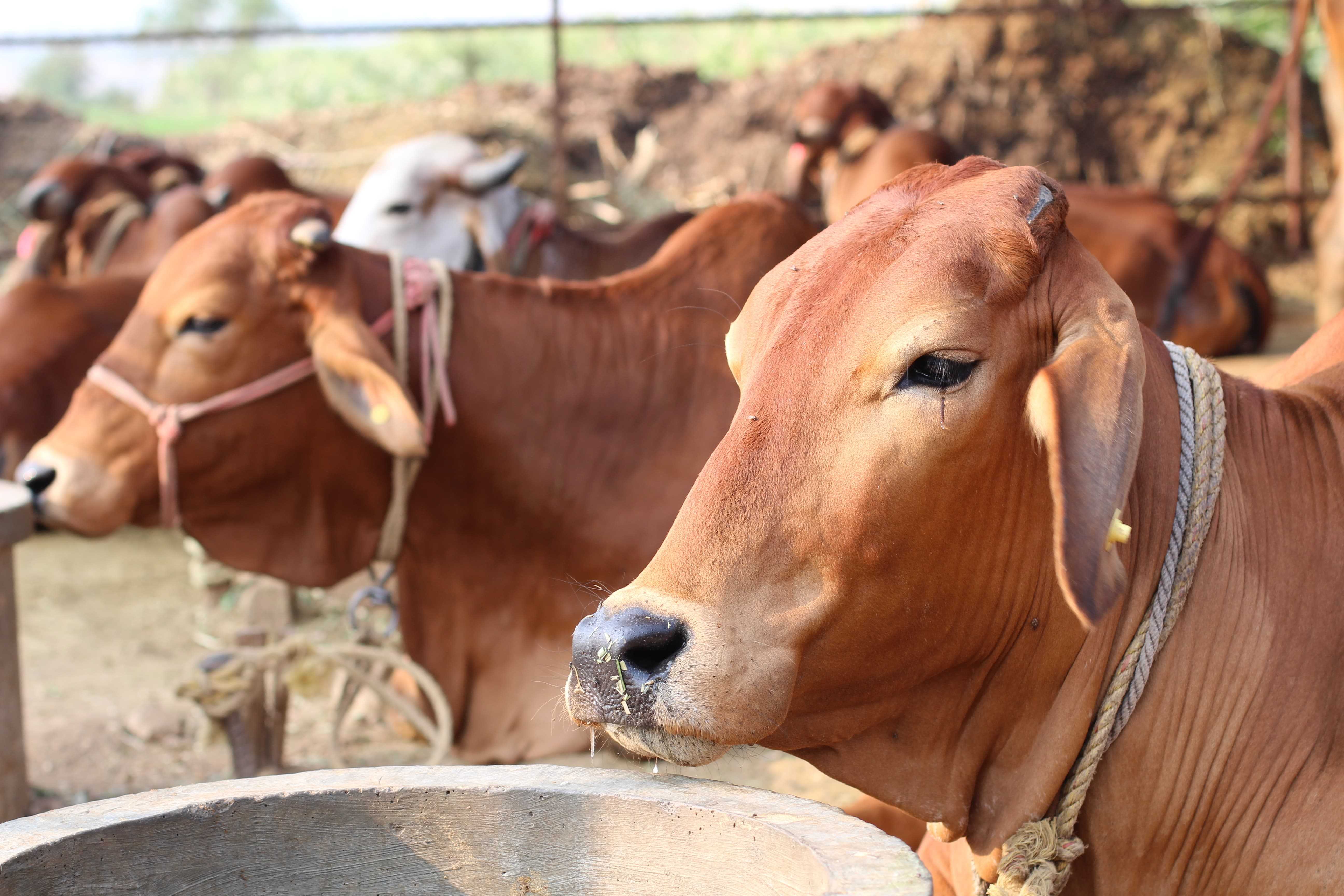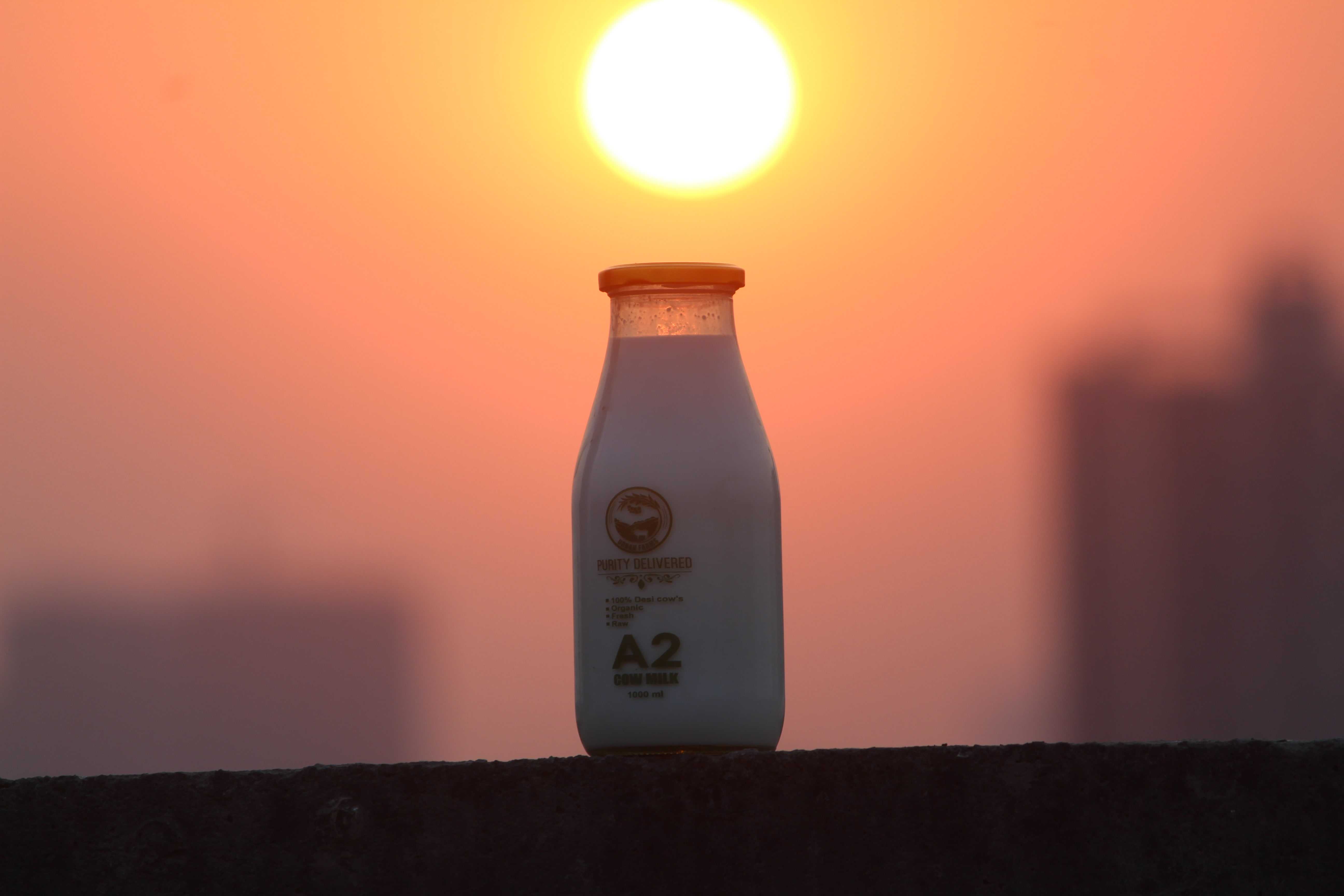In every Indian household, Desi Cow Ghee holds a special place. It’s more than just a cooking fat; it's a golden elixir, deeply woven into our traditions, culinary delights, and Ayurvedic practices. From sizzling tadkas to comforting rotis and nourishing sweets, ghee adds a unique richness that’s hard to beat.
However, with so many options available today, it’s easy to get confused. Is all ghee the same? How do you pick the truly superior one for your family’s health? The answer lies in a time-honored secret: the 'Bilona' method.
At Urban Farms, we believe in bringing you products that are not just natural, but genuinely superior – a philosophy that stems from our deep respect for traditional practices and pure ingredients.
This guide will take you on a journey into the ancient 'Bilona' process, explaining how this meticulous churning technique, practiced for thousands of years, results in a ghee that is unmatched in its purity, nutritional value, and authentic flavor. Discover why the Bilona difference is a game-changer for your health and palate.
What Exactly is 'Desi Cow Ghee'?
Before we dive into the 'Bilona' magic, let's clarify what we mean by "Desi Cow Ghee." It's ghee made specifically from the milk of indigenous Indian cow breeds – like the majestic Gir, the sturdy Sahiwal, or the resilient Rathi. These cows are known for producing A2 milk, which contains a unique protein structure (A2 beta-casein) that many find easier to digest compared to the A1 protein found in milk from many Western cow breeds. At Urban Farms, our Desi Cow Ghee comes exclusively from these treasured A2 milkproducing cows, ensuring a pure and beneficial starting point.
The Industrial vs. Traditional Method
The biggest difference in ghee quality comes down to how it's made. Most of the ghee you find in supermarkets today is produced using an industrial, large-scale process, often called the 'direct cream method'.
The Conventional (Industrial) Method:
In this process, large dairies separate cream directly from milk. This cream is then churned into butter, and this butter is heated at high temperatures to produce ghee. While this method is efficient and cost-effective for mass production, it often involves high heat processing, which can sadly strip away some of the ghee's delicate nutrients and beneficial compounds. Critically, this method skips a vital step: the fermentation of milk into curd.
The 'Bilona' Method: An Ancient Art
The 'Bilona' method, also lovingly known as the 'Vedic' or 'hand-churned' process, is an ancient Indian technique that dates back thousands of years. It’s a labor of love, a slow and deliberate art that respects the natural properties of milk. Here’s how it unfolds, step by precious step:
- Boiling Desi Cow Milk: Fresh, raw A2 Desi Cow milk is gently boiled to remove any impurities and harmful bacteria.
- Converting to Curd (Dahi): This is the most crucial step. The boiled milk is then cooled down, and a small amount of curd starter (jaman) is added. It's left overnight to naturally ferment and transform into wholesome curd (dahi). This fermentation pre-digests the milk solids and lactose, enhancing the nutritional profile and making the ghee almost completely lactose and casein-free, which can be great news for those with dairy sensitivities.
- Traditional Churning (Bilona): The curd is then churned using a traditional wooden churner, called a 'bilona', in a bidirectional motion (clockwise and anti-clockwise). This slow, rhythmic process separates the butter (makkhan) from the buttermilk. This is a far cry from the high-speed mechanical churners used in industrial production.
- Gentle Heating of Makkhan: The freshly separated butter (makkhan) is then gently heated over a low flame. This slow cooking allows the water content to evaporate, and the milk solids to separate and caramelize lightly at the bottom, leaving behind pure, aromatic ghee.
Why This Difference Matters So Much?
- The Power of Fermentation: The fermentation into curd is the game-changer. This step introduces beneficial bacteria, pre-digests milk components, and contributes significantly to the unique flavor and granular texture of Bilona ghee. While commercial ghee uses fresh milk or cream directly, Bilona ghee starts with the goodness of dahi.
- Low Heat Processing: The entire Bilona process, especially the heating of makkhan, uses a low, slow flame. This gentle approach ensures that the delicate, heat-sensitive nutrients are preserved, unlike high-temperature industrial methods.
- A2 Milk Foundation: By exclusively using milk from indigenous Desi Cows, Bilona ghee inherently carries the benefits of A2 milk, which research suggests may be easier on the digestive system for some individuals. For instance, studies have indicated that A2 milk consumption can lead to significantly less digestive discomfort compared to conventional A1 milk in certain populations.
- Nutrient Retention: The careful, traditional process of Bilona ghee making significantly minimizes nutrient loss. As a result, you get a ghee that’s a nutritional powerhouse.
The Superiority Factor: Why Bilona Ghee Stands Apart (Nutritional & Health Benefits)
The 'Bilona' method isn't just about tradition; it's about superior nutrition and a healthier product.
- Enhanced Nutrient Profile: Bilona ghee is a treasure trove of essential nutrients. It's especially rich in fat-soluble vitamins A, D, E, and K. These vitamins are crucial for various bodily functions, from supporting good vision and strong immunity (Vitamin A, D, E) to playing a vital role in calcium metabolism and bone health (Vitamin K2). Our slow-heating Bilona process ensures these delicate vitamins remain intact.
- Higher Butyric Acid Content: One of the superstars in Bilona ghee is Butyric Acid (Butyrate), a short-chain fatty acid. Butyric acid is a primary fuel source for the cells lining your colon, which are vital for a healthy gut barrier and proper digestion. It also has potent anti-inflammatory properties. Research highlights that butyric acid in ghee supports colon health and can contribute to a balanced gut microbiome.
- Superior Digestibility: Because the milk is fermented into curd before churning, the lactose and casein content is significantly reduced. This makes Bilona ghee much easier to digest for many people, including those who are sensitive to dairy.
- Authentic Flavor & Aroma: You'll immediately notice the difference. Bilona ghee boasts a distinct, rich, nutty aroma and a granular texture that mass-produced ghee simply cannot replicate. It truly elevates the taste of any dish it graces.
- High Smoke Point: Bilona Desi Cow Ghee has a remarkably high smoke point, typically around 485°F (252°C). This means it remains stable and doesn't break down into harmful free radicals even during high-heat cooking like sautéing, frying, or roasting, making it a much healthier choice than many common vegetable oils.
Identifying Authentic Bilona Desi Cow Ghee
In a market flooded with various ghee products, how do you ensure you're getting genuine Bilona Desi Cow Ghee? Here's what to look for:
- Color: Authentic Bilona ghee from grass-fed Desi cows usually has a beautiful golden yellow color due to the beta-carotene present in their milk.
- Texture: At room temperature, especially in cooler climates, Bilona ghee often has a slightly granular or grainy texture, not completely smooth.
- Aroma: It should have a distinct, rich, nutty, and pure aroma, not a bland or artificial smell. You can do a quick home test: gently heat a small spoonful of ghee. Pure ghee will melt immediately and turn dark brownish. If it takes longer to melt or turns yellowish, it might be adulterated.
- Labeling: Look for clear mentions of "Desi Cow Milk" (with specific breed names if possible, like Gir or Sahiwal), and "Bilona Method" or "Hand-Churned" on the product label.
- Price Point: The Bilona method is labor-intensive and requires a significant amount of milk (it takes approximately 25–27 litres of Desi Cow milk to make just 1 litre of Bilona ghee). Therefore, authentic Bilona ghee will naturally be more expensive than industrially produced ghee. Be wary of unusually cheap ghee – quality comes at a cost.
Investing in Health with Bilona Ghee
The 'Bilona' method is more than just a technique; it's a philosophy that honors tradition, purity, and the well-being of both consumers and cows. By choosing Desi Cow Ghee made with the Bilona method, you're not just buying a cooking ingredient; you're investing in a product that is richer in vital nutrients, easier to digest, boasts an authentic flavor, and supports sustainable, ethical practices.
Ready to experience the true essence of Desi Cow Ghee and rediscover its unparalleled goodness? Explore our range of authentic Bilona Desi Cow Ghee at Urban Farms, handcrafted with care to bring you the purest form of this ancient superfood.











Leave A Comment